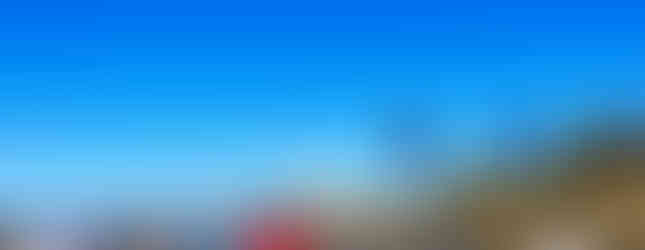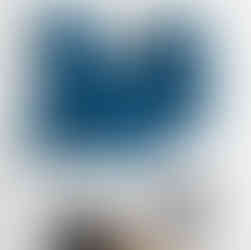- Rosa Chang
- Aug 31, 2023
- 4 min read

“My first trip to Jeju Island with my grandma and mom was full of excitement. That’s when I first saw for myself how the blue of the sky meet the blue of the sea” from “My Indigo World” by Rosa Chang
Over the last three years, Indigo Shade Map has been focused on serving as a platform to share and document indigo stories from people all over the world. I’ve decided to begin sharing more of my stories as I’ve been traveling a lot lately. You can continue to follow my and the Indigo Shade map journey through our blog or social media page.
Today, I’m so excited to share my beautiful experience and update everyone about the Indigofest retreat I attended a few weeks ago. I was invited to join the full four days of the Indigofest retreat on August 10-14th, 2023 at Sou'wester Historic Lodge & Vintage Travel Trailer Resort in Seaview, Washington.
I found myself seeing how the blue of the sky met the blue of the sea on my first trip to the beach in Seaview, Washington as I saw it in Jeju Island when I was young. Indigofest retreat is an annual event that was originally co-founded by two amazing artists, natural dyers, and educators, Britt Boles and Iris Sullivan, in 2019. It was my first time joining the Indigofest retreat and I served as one of the 6 blue crew members to assist participants and engage with them during the retreat. Gratefully, I was able to run two book reading sessions with my debut picture book My Indigo World on the last day of the retreat. I’m grateful for both Britt and Iris who offered the space for me to connect with the Sou’wester team while hosting a public book reading session. I’m sharing my personal “best moments” and selected visual memories during Indigofest to say farewell to summertime and celebrate the beginning of the fall.
I can’t stress enough how summer is such an important time to be engaged with natural indigo. Probably any indigo grower and dyer who sees this blog will anticipate it. This summer we harvested loads of indigo plants from our garden/farm and underwent the entire extraction process of the pigment. The humidity and hot sun accelerate the fermentation process, allowing us to earn the precious blue pigments from the fresh indigo leaves… Even the indigo vat making process and the fabric dyeing process, too!

Simply, it was a celebration of Indigo and Mother Nature. I was so struck by seeing Britt and Iris sharing many different ways of dyeing fabrics with natural indigo and each way created different shades of colors, not only blue but even pink and purple! Buckets of a variety of Japanese indigo plants (Polygonum tinctorium / Persaceria tinctoria), cultivated and harvested locally in the Oregon region, were provided during the fresh leaf dyeing session. Personally, I enjoyed joining the fresh leaf dyeing process so much because it reminded me of my ancestors back in my motherland, Korea, who have been practicing the summer event since ancient times.
The beautiful turquoise color of the soaked indigo water, full of indirubin, made so many different shades of blue, purple, and pink!
Building the local vat, an invention by Britt and Iris, was also such a special time.
A fermented indigo vat called “Local vat” created by Britt and Iris by using all locally sourced ingredients: Indigo pigments were extracted from locally grown polygonum tinctorum plants (Oregon), Salal berries (locally grown in the Pacific Northwest region) for the sugar source, and burnt oyster shells (locally sourced) for the alkaline solution!

Free studio times were provided along with Britt and Iris’s detail-oriented dye demonstrations so that participants were able to work on their own personal projects. Reduction vats such as iron vats and Indigold vats (pre-reduced indigo from Stony Creek Colors) were provided with loads of fabrics as well as a large pot of Cassava paste resist and a variety of pattern making tools such as wood blocks, threads, and clamps.
The summer breeze from the ocean in the Pacific Northwest not only cools down the weather but also lets me be peacefully embraced by Mother Nature. I had some unknown heavy feelings leaving behind the reminiscence of the glorious Indigofest retreat and the beautiful indigo blue shades.

During the retreat, I learned about Chinookan people. Britt sold handmade indigo postcards to fundraise in support of the Chinookan people, the original people in the area where the Indigofest is held (Oregon and Washington State). The indigenous people that inhabit the lower columbia river have the most intimate relationship with Mother Nature in the region. She taught us about the awareness of the Chinookan people not being recognized by the federal government after so many years. There are streets and places named after them and their language in the region. They heavily struggle to preserve their habitat, heritage, and culture. I would humbly say learning about the Chinook people was one of the most memorable moments from Indigofest even with so many eye-catching colors and nature…including the cute retro camping cars, wonderful heartwarming people, and the bonfire spent time altogether.
Image from “My Indigo World” by Rosa Chang
The darkest blue sky in the silent night created a peaceful time to listen to my inner self…including in which direction I'm heading toward with the Indigo Shade Map and what the indigo plants have taught me. “Indigo weaves together many lives and people in complex history to better connect one another and the beauty of slow process. Good things take time”.
I hope my first personal blog post with Indigo Shade map leads you to research about Chinookan people as well as the original people/tribes in the area where you reside.
You can find more information about the Chinook Indian Nation or contribute through their website, here. You can find the same link on Indigofest’s homepage as well.
Special thanks to Britt, Iris, and our Blue Crew (Sara, Marian, Wren, Betsy, and Jessica)!
Bye Summer, welcome Fall.
Rosa
Photos: All photos from Rosa (myself)'s iphone.












































































































































